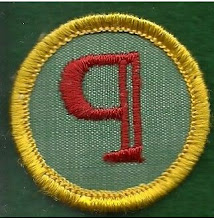Last week I wrote about an accidental mash up of a wedding and anniversary celebration, which still ranks as the coolest event I've even worked at or attended. Almost everybody was very, very understanding; the anniversary couple toasted the wedding couple; the World War I vet shook the Vietnam soldier's hand and thanked him for his service... this was at a time when many men and women would slink back from service in Vietnam because there were folks in the airport chanting things like "baby killer".
But of course not everyone at the event was perfectly happy -- there was a fly in the ointment* -- an antagonist. In this case, it was one of the sisters of the bride, who was livid at the scheduling mix-up that resulted in two events being in the same place at the same time.
In this story, the sister-of-the-bride is the antagonist: she demanded to talk to our managers; and once she started complaining, there were a few titters of agreement from other folks on the scene, there were comments about withholding part of the payment.
Note this: the sister-of-the-bride didn’t blame us, the two catering managers; she was careful to tell us that she understood that we hadn’t scheduled the events; she was correct in asking to speak to the event coordinator. She was reasonable, she wasn’t raging drunk -- and OK, she’s a little boring as an antagonist. I’m really tempted to embroider on her personality, have her wearing an age-inappropriate flowered mini-dress and maybe waving a Mai Tai at me. But if I do that, I stray off into clichéd behavior.
Make your villain(s) real, with human characteristics your readers understand. Yes, most of us probably have an Aunt Martha who wears floppy hats and drinks too much at weddings. However, the reader wants backstory: why does Aunt Martha get drunk and tell embarrassing stores at weddings?
Why does the antagonist dislike the protagonist? Why was the sister of the bride so pissed off when no one else seemed to be? Why did a few folks speak up when she did? Were they all being sweet as honey until later, when we'd get sued?
There's another character in this story -- the event manager. The event manager had been on the job for about two weeks and she had not scheduled the two events. The other catering manager and I knew that she was a retired Army nurse and that she had set up and run field hospitals in Korea. We watched her serenely take charge and make the two events not only flow smoothly, but be memorable. She got the two almost-surplus mess tents there, she managed to come up with a string quartet for the wedding and a DJ who spun hits from 1920-1970 -- neither had been originally scheduled for either event.
She talked for a long time with the disgruntled sister-of-the-bride. Afterward, when we were cleaning up, the event manager said, “Well, I do think I've kept her from suing us all. She's mad that her little sister has married that boy; he dated her first. That’s got to be uncomfortable all around, right? The kids were going to get married quietly, but the family found out and they all flew in, arranged this surprise wedding, brought their mother's wedding dress and all. Our bride didn’t want to wear her mother’s dress, did you notice that she changed clothes in the middle of the evening?”
“Yeah she was wearing an old-fashioned thing in the beginning, looked hot and uncomfortable, I figured it was a good move change to a Hawaiian wedding dress.”
“Oh yes… well… the bride is pregnant – just barely. I’m sure that first dress was far too tight.”
"The sister told you all that?"
“And the bride. A lot of what a nurse does is listen.”
What happened to those two couples? Next week: prologues and epilogues.
__________________
*Ever had a fly in your ointment? Me neither. Fly in the amber might be the source of the phrase. For the origin of the phrase, see http://www.phrases.org.uk/bulletin_board/16/messages/870.html


